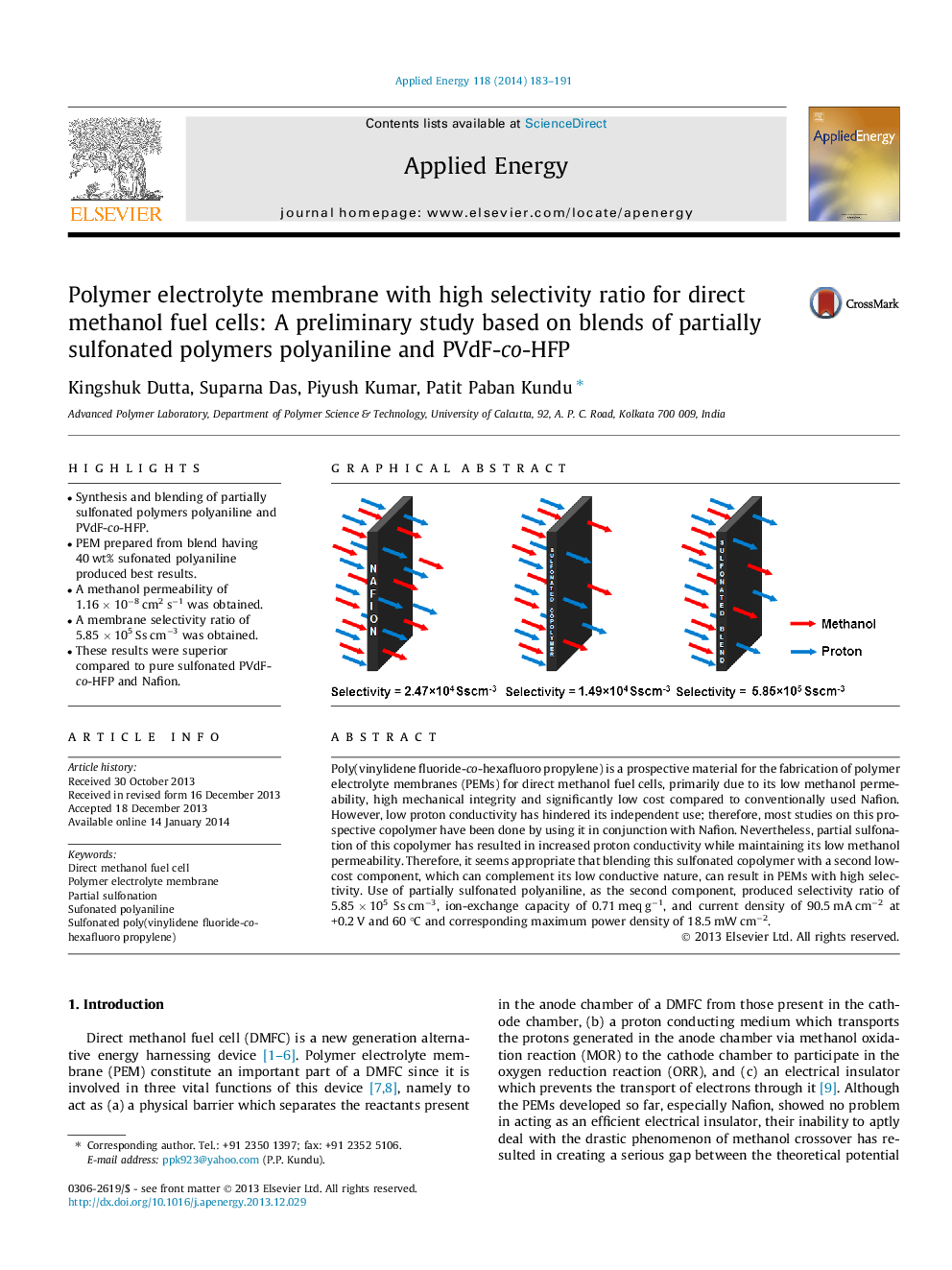| Article ID | Journal | Published Year | Pages | File Type |
|---|---|---|---|---|
| 242861 | Applied Energy | 2014 | 9 Pages |
•Synthesis and blending of partially sulfonated polymers polyaniline and PVdF-co-HFP.•PEM prepared from blend having 40 wt% sufonated polyaniline produced best results.•A methanol permeability of 1.16 × 10−8 cm2 s−1 was obtained.•A membrane selectivity ratio of 5.85 × 105 Ss cm−3 was obtained.•These results were superior compared to pure sulfonated PVdF-co-HFP and Nafion.
Poly(vinylidene fluoride-co-hexafluoro propylene) is a prospective material for the fabrication of polymer electrolyte membranes (PEMs) for direct methanol fuel cells, primarily due to its low methanol permeability, high mechanical integrity and significantly low cost compared to conventionally used Nafion. However, low proton conductivity has hindered its independent use; therefore, most studies on this prospective copolymer have been done by using it in conjunction with Nafion. Nevertheless, partial sulfonation of this copolymer has resulted in increased proton conductivity while maintaining its low methanol permeability. Therefore, it seems appropriate that blending this sulfonated copolymer with a second low-cost component, which can complement its low conductive nature, can result in PEMs with high selectivity. Use of partially sulfonated polyaniline, as the second component, produced selectivity ratio of 5.85 × 105 Ss cm−3, ion-exchange capacity of 0.71 meq g−1, and current density of 90.5 mA cm−2 at +0.2 V and 60 °C and corresponding maximum power density of 18.5 mW cm−2.
Graphical abstractFigure optionsDownload full-size imageDownload as PowerPoint slide
